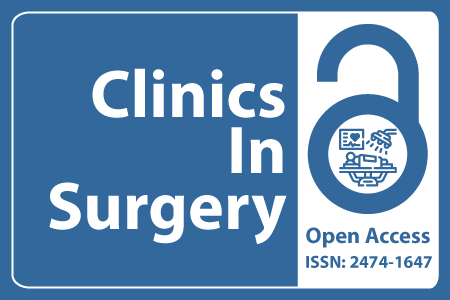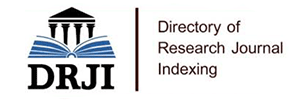
Journal Basic Info
- Impact Factor: 1.995**
- H-Index: 8
- ISSN: 2474-1647
- DOI: 10.25107/2474-1647
Major Scope
- General Surgery
- Colon and Rectal Surgery
- Obstetrics Surgery
- Robotic Surgery
- Thoracic Surgery
- Neurological Surgery
- Bariatric Surgery
- Minimally Invasive Surgery
Abstract
Citation: Clin Surg. 2018;3(1):2163.Research Article | Open Access
The Use of a Cellular Dermal Matrix (ADM) in Prepectoral Implant-Based Breast Reconstruction: A Review of the Literature
Mackenzie A, Kasem A and Mokbel K
Department of General Surgery, Medway Maritime Hospital, UK
Department of Breast and Oncoplastic Surgery, The Princess Grace Hospital, UK
Department of Breast and Oncoplastic Surgery, The Princess Royal University Hospital, UK
*Correspondance to: Aliya Mackenzie
PDF Full Text DOI: 10.25107/2474-1647.2163
Abstract
Background/Aims: Prepectoral implant-based breast reconstruction with the use of Acellular Dermal Matrix (ADM) has re-emerged as an increasingly popular choice for post-mastectomy breast reconstruction. However, controversy remains regarding complication rates, cosmetic outcomes and patient selection.Materials and
Methods: This review examines the current literature regarding ADM and prepectoralbased breast reconstruction; highlighting technique, complication rates, cosmetic outcome, patient safety and satisfaction, appropriate patient selection, and areas for further research.Results: This appraisal clearly demonstrates that pre-pectoral breast reconstruction is safe, feasible and has excellent short-term outcomes (cosmesis, complication rates and patient satisfaction). Main advantages include decreased animation deformity, shoulder dysfunction and chronic pain, and possibly a lower incidence of capsular contracture. Notable shortcomings include small population size and lack of long-term follow-up regarding oncological and aesthetic outcomes especially the incidence of rippling. Outcomes establish dependency on patient factors (i.e. BMI, co-morbidities, lifestyle, etc.), breast size, intra-operative flap assessment, and adjuvant radiotherapy. Recent evidence suggests that post mastectomy radiation does not represent a contraindication to this approach. Meshed ADMs seem to be superior to solid ADMs in terms of integration and cost effectiveness.Conclusion: Short-term outcomes of pre-pectoral ADM-assisted implant-breast breast reconstruction of are promising; however, long-term outcomes are yet to be assessed, requiring further research.
Keywords
Pre-pectoral; Mastectomy; Breast cancer; ADM; Acellular dermal matrix
Cite the article
Mackenzie A, Kasem A, Mokbel K. The Use of a Cellular Dermal Matrix (ADM) in Pre-pectoral Implant-Based Breast Reconstruction: A Review of the Literature. Clin Surg. 2018; 3: 2163.













